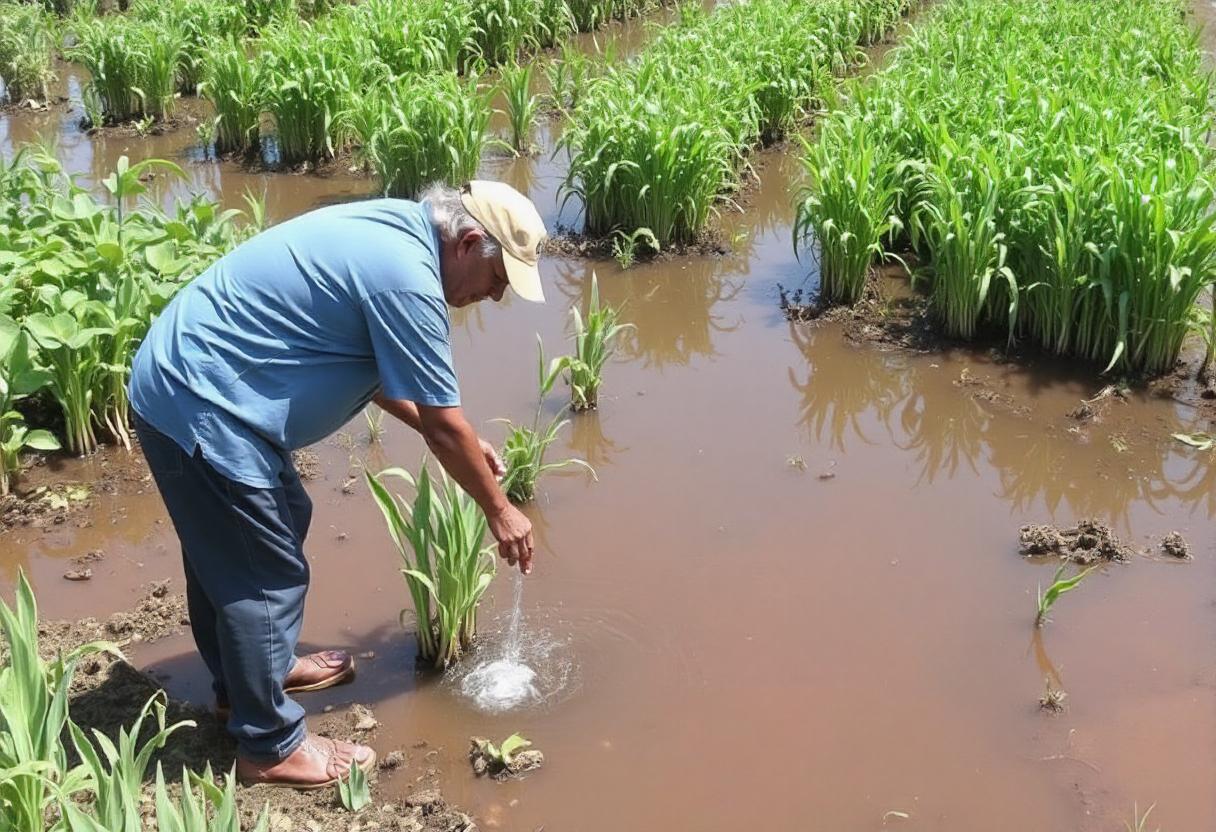
Importance of Water in Agriculture
Water is a critical input in agriculture, playing a vital role in plant growth, nutrient transport, and maintaining crop health. Efficient use of water is essential for food production, especially in regions where water scarcity is a challenge. Agriculture is the largest consumer of freshwater, accounting for approximately 70% of global water usage, making water management a priority for sustainability.
Types of Irrigation Methods
Farmers employ various irrigation methods to optimize water usage in agriculture. Some of the most common methods include:
- Flood Irrigation: This traditional method involves flooding the entire field with water. While it is inexpensive and easy to implement, it often leads to water wastage due to evaporation and runoff.
- Drip Irrigation: A more efficient method where water is delivered directly to the roots of plants through a network of pipes, tubes, and emitters. Drip irrigation minimizes water wastage by reducing evaporation and ensuring that only the necessary amount of water is used.
- Sprinkler Irrigation: Water is distributed through sprinklers that simulate rainfall. This method is widely used in areas with uneven terrain. Although more water-efficient than flood irrigation, it can still lead to some evaporation losses.
- Subsurface Irrigation: In this method, water is applied below the soil surface, directly to the root zone. Subsurface irrigation reduces evaporation and increases water use efficiency, but it can be costly to install and maintain.
Challenges in Agriculture Water Management
Effective water management in agriculture is fraught with several challenges, including:
- Water Scarcity: With growing populations and increasing demand for food, the strain on water resources is immense. Climate change exacerbates this problem, leading to more frequent droughts and water shortages in many agricultural regions.
- Poor Infrastructure: In many developing countries, outdated or inadequate irrigation infrastructure leads to water loss through leaks, inefficient distribution, and poor maintenance.
- Salinization of Soil: In some areas, over-irrigation or the use of poor-quality water can lead to the buildup of salts in the soil, which negatively impacts crop yields and soil health.
- Competing Water Demands: Agriculture competes with industrial, domestic, and environmental water needs. Balancing these competing demands requires careful planning and cooperation among stakeholders.
Water Conservation Techniques
There are several strategies that farmers can adopt to conserve water and make agricultural water use more sustainable. Some of these techniques include:
- Rainwater Harvesting: Capturing and storing rainwater for use during dry periods can significantly reduce reliance on external water sources.
- Soil Moisture Monitoring: By using sensors to monitor soil moisture levels, farmers can apply water only when necessary, avoiding over-irrigation and reducing water waste.
- Crop Selection: Growing crops that are better adapted to local climatic conditions or that require less water can help farmers conserve water. Drought-resistant crop varieties, for example, are becoming more popular in areas prone to water scarcity.
- Mulching: Applying a layer of organic or inorganic material on the soil surface can reduce water evaporation and help maintain soil moisture.
Role of Technology in Water Management
Technology plays an essential role in enhancing the efficiency of water use in agriculture. Advanced systems and innovations are helping farmers optimize water consumption while maintaining crop yields. Key technological advancements include:
- Precision Irrigation: Using data from soil sensors, weather forecasts, and satellite imagery, precision irrigation systems deliver the right amount of water at the right time, reducing water wastage and increasing crop productivity.
- Smart Water Management Systems: IoT (Internet of Things) devices and automated systems allow farmers to monitor and control irrigation processes remotely, ensuring efficient water use without the need for manual intervention.
- Desalination Technologies: In regions where freshwater is scarce, desalination technology can provide an alternative source of water for irrigation by removing salt from seawater or brackish water.
- Drones and Satellite Imagery: Drones equipped with cameras and sensors can capture detailed images of crops and soil moisture levels, helping farmers make data-driven decisions about water use. Satellite imagery can provide a broader perspective of water availability and usage across large agricultural landscapes.
Policy and Regulation
Effective agricultural water management also depends on sound policies and regulations. Governments play a crucial role in ensuring sustainable water use by setting policies that encourage water conservation, funding infrastructure improvements, and promoting research into water-efficient technologies. In some regions, water rights are allocated to ensure fair and equitable distribution among different users, including farmers.
Sustainable Agriculture Practices
In addition to water management technologies, adopting sustainable agriculture practices can reduce water consumption and protect water resources. Practices such as conservation tillage, agroforestry, and organic farming can help retain soil moisture, reduce runoff, and promote water infiltration into the soil.